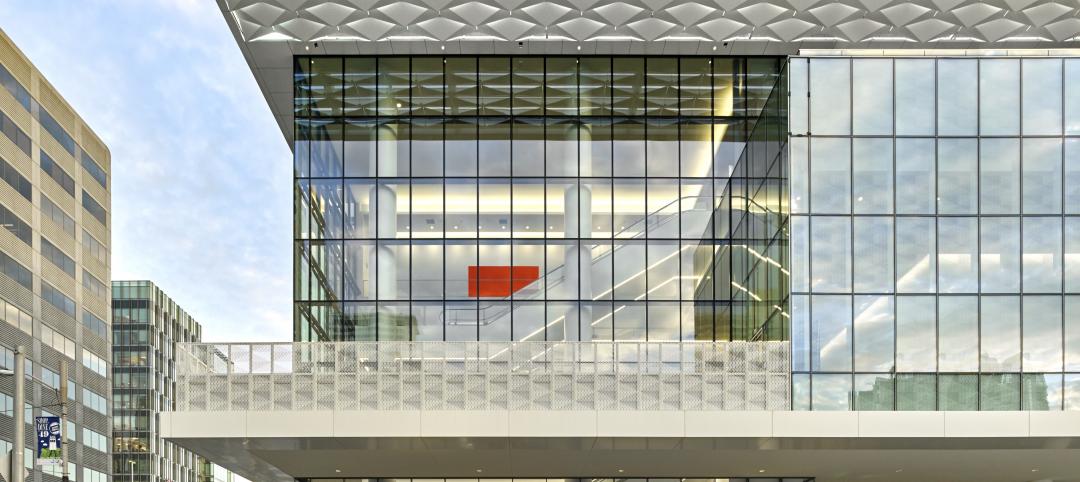Construction employment stalled in June as more former construction workers left the industry, according to an analysis of new federal data released by the Associated General Contractors of America. The lack of current job openings, along with the departure of experienced workers, suggests a potential skilled-labor shortage may be developing, construction association officials warned.
“Employment in the construction industry has fluctuated within a very narrow range—1% above or below the June level of 5.5 million—for more than two years now,” said Ken Simonson, the association’s chief economist. While the latest figure was 14,000 higher than one year earlier, the June 2012 total was just 2,000 higher than in May and in June 2010. “Construction employment has essentially been stagnant for much of the past two years.”
Meanwhile, the unemployment rate for former construction workers fell to 12.8%, the lowest June rate since 2008 and much better than the 15.6% rate in June 2011 or the 20.1% rate in June 2010, Simonson noted. He added that over the past two years nearly 750,000 experienced workers have either found jobs in other industries, returned to school, retired or otherwise left the workforce. “It will be hard for construction firms to get those skilled workers back when demand picks back up.”
There was little difference among construction segments in terms of recent job gains or losses, Simonson noted. Residential construction added 1,700 total jobs in June and 8,900 (0.4%) over 12 months. Nonresidential construction firms lost 600 jobs in June but added 4,300 (0.1%) over 12 months.
Within the residential segment, residential specialty trade contractors added 7,600 jobs for the month and 14,100 (1.0%) over the past year, reflecting ongoing strength in multifamily construction. In contrast, residential builders—mostly single-family homebuilders—lost 5,900 positions in June and 5,200 (-0.9%) over 12 months.
Nonresidential job gains for the year were concentrated among nonresidential building contractors, which lost 1,000 jobs in the latest month but added 4,300 (0.7%) over 12 months. Heavy and civil engineering construction firms shed 2,000 jobs in June and 1,800 (-0.2%) in the past year. Nonresidential specialty trade contractors boosted employment by 2,400 since May but only 1,800 (0.1%) since June 2012.
Association officials noted that one bright spot for the industry was the 27-month highway and transit bill the president is signing into law today. They said the legislation includes many significant reforms that will allow more existing transportation funds to be invested in highway and transit construction projects, as opposed to unrelated programs.
“This measure will certainly help staunch the decline in construction employment among highway and transportation builders,” said Stephen E. Sandherr, the association’s chief executive officer. “Congress understands that investing in infrastructure is one of the best ways to support growth within the private sector.” +
Related Stories
Giants 400 | Oct 24, 2019
Top 125 Retail Architecture Firms for 2019
CallisonRTKL, Gensler, MG2, NELSON, and Stantec top the rankings of the nation's largest retail sector architecture and architecture engineering (AE) firms, as reported in Building Design+Construction's 2019 Giants 300 Report.
Architects | Oct 11, 2019
SMPS report tracks how AEC firms are utilizing marketing technology tools
With thousands of MarTech tools and apps on the market, design and construction firms are struggling to keep up.
Healthcare Facilities | Oct 4, 2019
Heart failure clinics are keeping more patients out of emergency rooms
An example of this building trend recently opened at Beaumont Hospital near Ann Arbor, Mich.
Giants 400 | Oct 3, 2019
Top 30 Convention Center Sector Architecture Firms for 2019
LMN Architects, Gensler, Populous, Fentress Architects, and Moody Nolan top the rankings of the nation's largest convention center sector architecture and architecture engineering (AE) firms, as reported in Building Design+Construction's 2019 Giants 300 Report.
Giants 400 | Oct 3, 2019
Top 110 Cultural Sector Architecture Firms for 2019
Gensler, Populous, DLR Group, Stantec, and Perkins and Will top the rankings of the nation's largest cultural facility sector architecture and architecture engineering (AE) firms, as reported in Building Design+Construction's 2019 Giants 300 Report.
Giants 400 | Oct 3, 2019
2019 Cultural Facility Giants Report: New libraries are all about community
The future of libraries is less about being quiet and more about hands-on learning and face-to-face interactions. This and more cultural sector trends from BD+C's 2019 Giants 300 Report.
Architects | Oct 3, 2019
LEO A DALY wins Architect of the Capitol contract
The firm will help modernize some of the country’s most significant public buildings.
3D Printing | Sep 17, 2019
Additive manufacturing goes mainstream in the industrial sector
More manufacturers now include this production process in their factories.
Multifamily Housing | Sep 12, 2019
Meet the masters of offsite construction
Prescient combines 5D software, clever engineering, and advanced robotics to create prefabricated assemblies for apartment buildings and student housing.
Cultural Facilities | Sep 11, 2019
The Kennedy Center expands for the first time since its 1971 debut
The REACH, with three pavilions on a generous lawn, adds openness and light to this performance space.

















